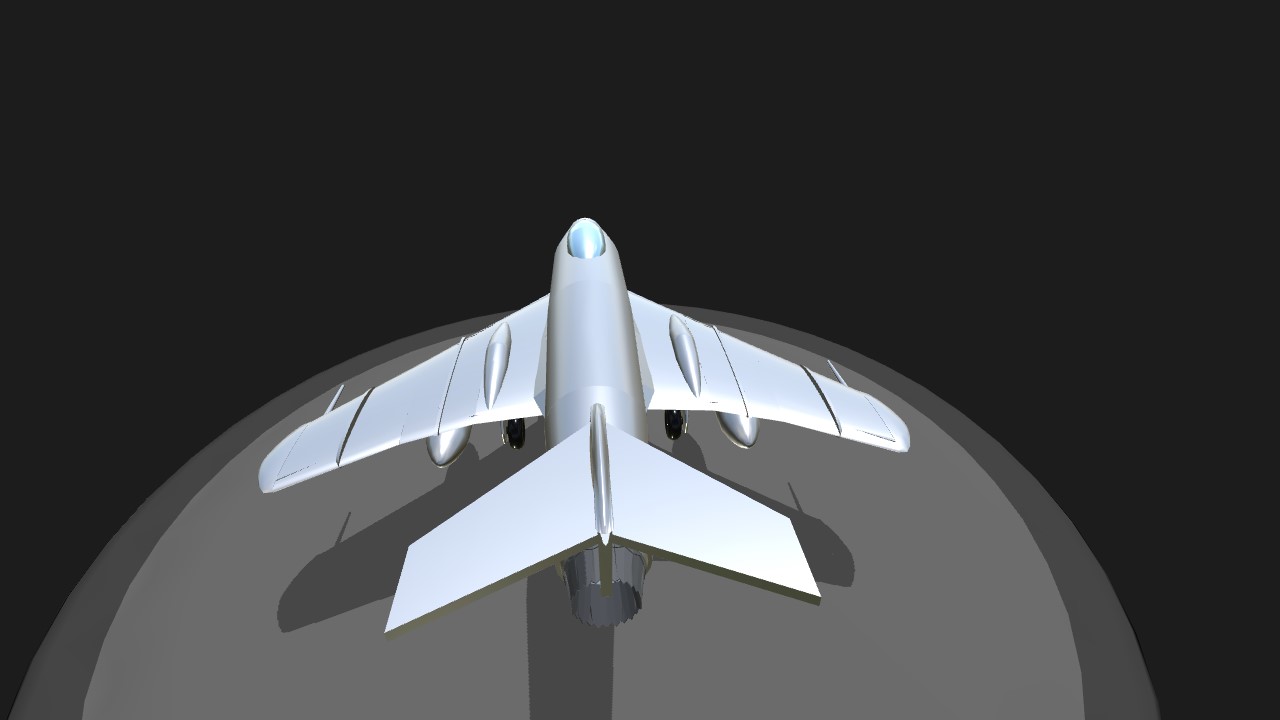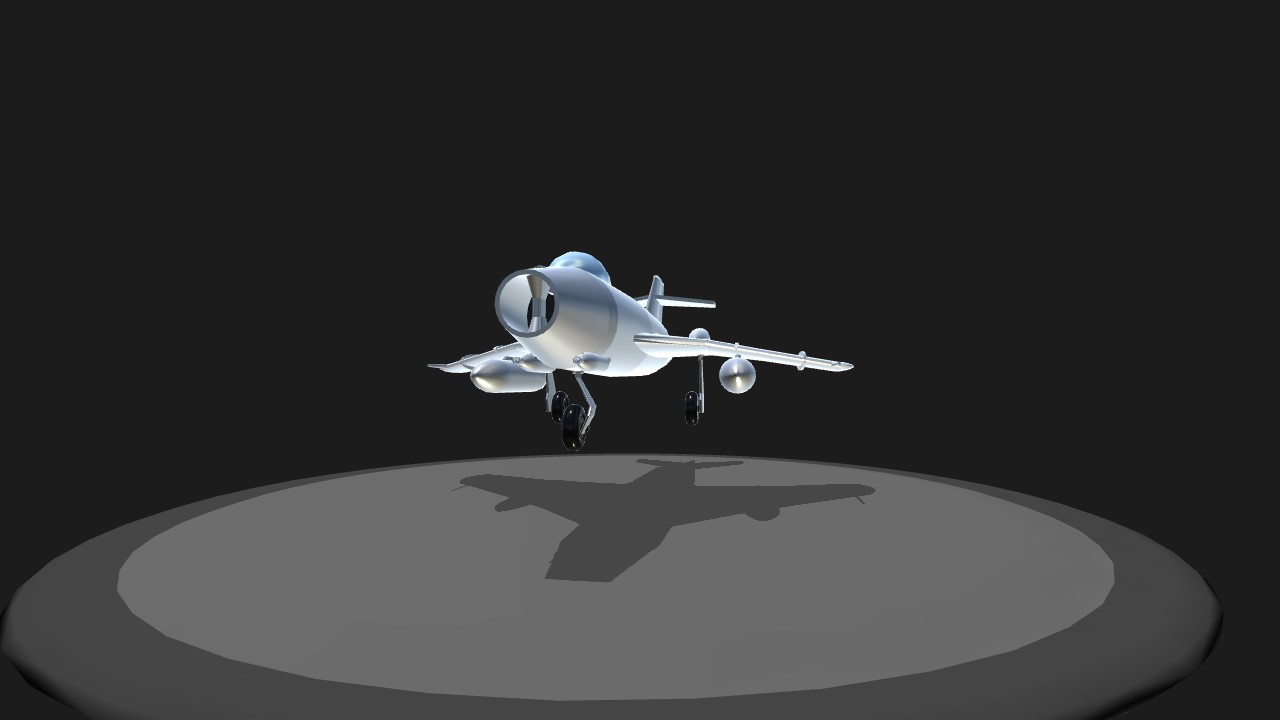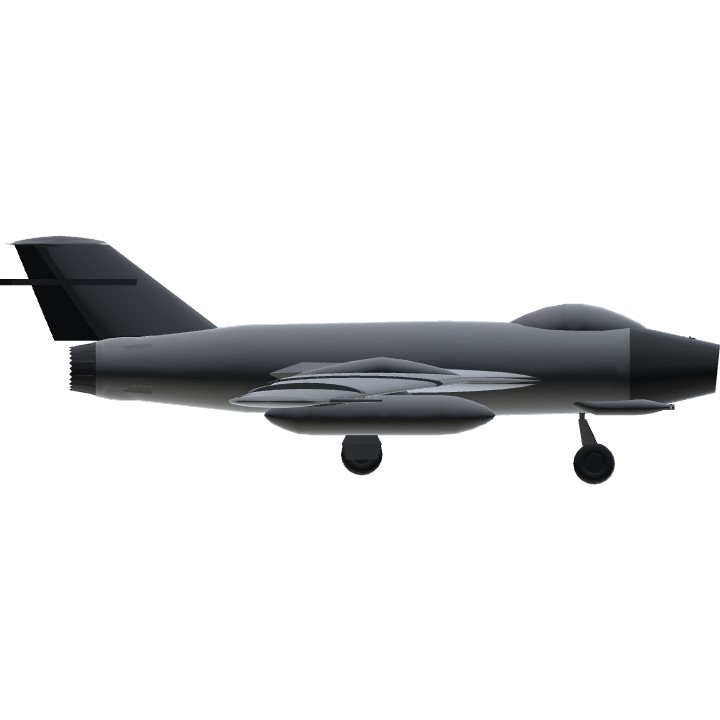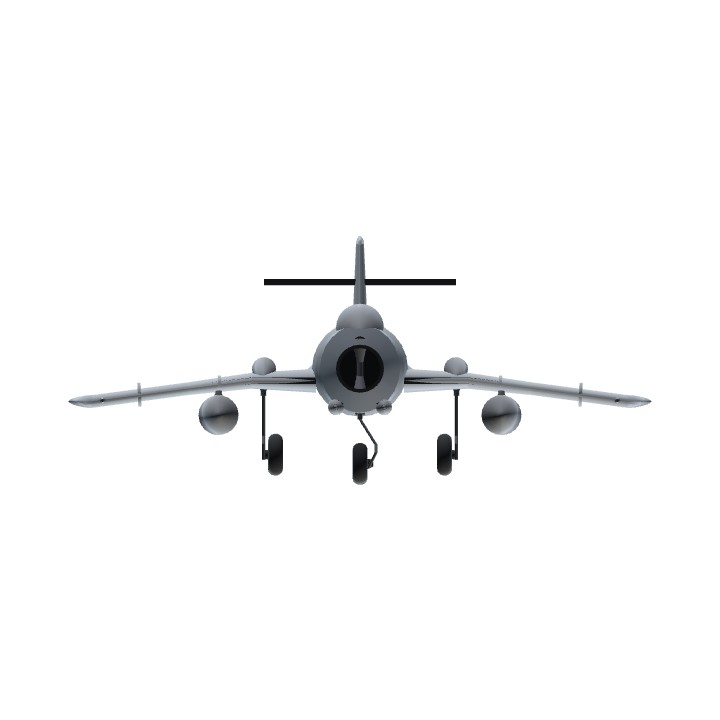This is my entry for Jacobdaniel's dogfight challenge, a MIG-17.
Some facts about Mig-17:
"In 1949, the Mikoyan-Gurevich (MiG) design bureau began work on a new fighter to replace the MiG-15. Two features of the aircraft were a thinner wing of greater sweep and a redesigned tail that improved stability and handling at speeds approaching Mach 1 (speed of sound). Although similar in appearance to the MiG-15, the MiG-17 has more sharply swept wings, an afterburner, better speed and handling characteristics and is about three feet longer. The wings of the aircraft are mid-mounted, swept-back, and tapered with blunt tips. They have wide wing roots. The engine is one turbojet inside the body and has a round air intake in the nose. It has a single, small exhaust. The fuselage is short, thick, cigar-shaped and tapered to the rear. It has a blunt nose and bubble canopy. The tail fin is swept-back and tapered with rounded tip. Flats are high-mounted on the tail fin, swept-back, and tapered. Flats and fin overhang the exhaust.
The prototype MiG-17 (NATO code name Fresco) first flew in January 1950 and was reported to have exceeded Mach 1 in level flight. Production began in late 1951, but the aircraft were not available in sufficient quantities to take part in the Korean War. Deliveries to the Soviet Air Force began in 1952. Five versions of the aircraft eventually were produced. Early production MiG-17s were fitted with the VK-1 engine, a Soviet copy of the Rolls-Royce Nene. The VK-1F, an improved version with a simple afterburner and variable nozzle, was developed for the main production version, the MiG-17F (Fresco C). In 1955 the radar equipped MiG-17PF (Fresco D) entered service as a limited all-weather interceptor. The MiG-17PFU was armed with four AA-1 "Alkali" radar-guided missiles, making it the Soviet Union's first missile armed interceptor. Even though it was considered obsolete by the mid-1960s, the MiG-17 gave a good account over Vietnam, being flown by most of the top North Vietnamese pilots, including the leading ace, Colonel Tomb.
The MiG-17 served with nearly 30 air forces worldwide, including the Soviet Union, Warsaw Pact countries, China, Afghanistan, North Korea, Sri Lanka, Syria, Morocco, Cuba, Indonesia, and Cambodia. Though smaller than the USAF F-86 Sabre of Korean War fame, its weight and performance favorably compared to that aircraft. Soviet production of the MiG-17 ended in 1958 with over 6,000 produced. It continued to be built under license in Poland as the Lim-5P and in China as the J-5/F-4. China's first reproduced jet fighter plane, the J-5, successfully flew in Shenyang for the first time on 19 July 1956, and General Nie Rongzhen went in person to Shenyang to offer congratulations."--from fas.org
Features:
3 guns for combat
2 droptanks (group 1)
Specifications
General Characteristics
- Successors 1 airplane(s)
- Created On Windows
- Wingspan 29.9ft (9.1m)
- Length 36.9ft (11.3m)
- Height 12.7ft (3.9m)
- Empty Weight 9,271lbs (4,205kg)
- Loaded Weight 13,205lbs (5,989kg)
Performance
- Power/Weight Ratio 2.552
- Wing Loading 56.5lbs/ft2 (275.8kg/m2)
- Wing Area 233.8ft2 (21.7m2)
- Drag Points 5006
Parts
- Number of Parts 95
- Control Surfaces 5
- Performance Cost 428






